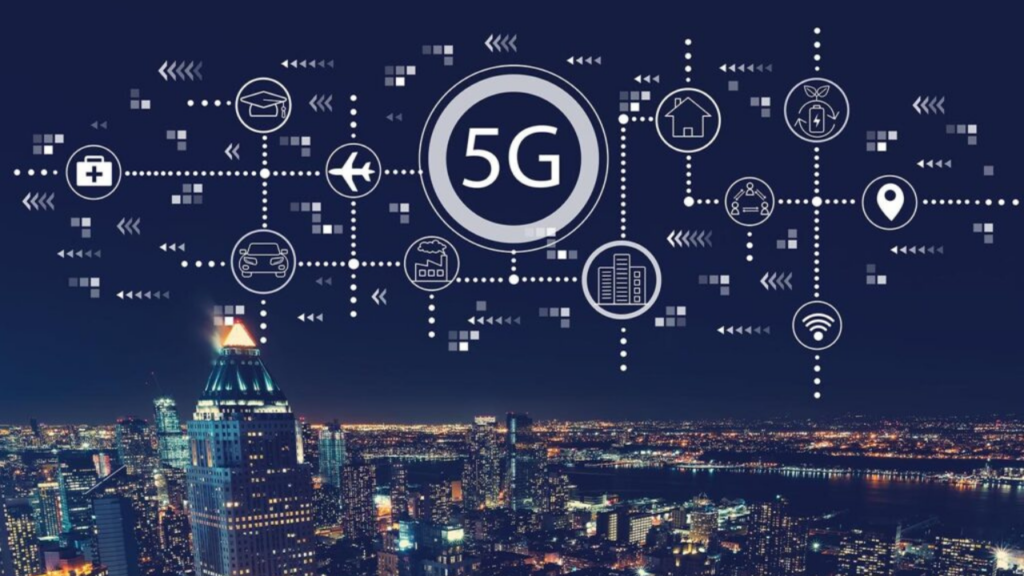Cybersecurity in the Age of 5G: The Challenges and Opportunities Ahead
The dawn of the 5G era has ushered in a new wave of technological possibilities and advancements. The benefits are undeniable as we immerse ourselves in a hyper-connected world where data speeds are exponentially faster, and latency is minimized. However, with great power comes great responsibility, and the rapid expansion of 5G technology also brings significant cybersecurity challenges. In this blog, we delve into the dynamic landscape of cybersecurity in the age of 5G, exploring both the challenges that lie ahead and the opportunities to fortify our digital world.
According to UpGuard It is relatively early in its evolution, but forecasts predict there will be more than 3.5 billion 5G connections worldwide by 2025. Governments and businesses anticipate many changes to how we live and do business. With this new iteration of mobile technology, 5G is expected to be in use for at least another couple of decades until 6G technology is developed.
The Power of 5G:
The transition from 4G to 5G technology promises incremental improvements and a transformative leap. 5G’s incredible speed and low latency are poised to revolutionize the healthcare, transportation, manufacturing, and entertainment industries. Autonomous vehicles will communicate instantaneously, remote surgeries will become more feasible, and the Internet of Things (IoT) will flourish like never before. However, this immense potential also opens the door to novel cybersecurity risks.

Challenges on the Horizon:
- Expanded Attack Surface: With the proliferation of IoT devices and sensors, the attack surface for cybercriminals widens significantly. Each connected device becomes a potential entry point for attackers to exploit.
- Distributed Denial of Service (DDoS) Amplification: The increased bandwidth of 5G networks could potentially enable larger-scale DDoS attacks, overwhelming systems and causing disruptions.
- Network Slicing Vulnerabilities: Network slicing, a key feature of 5G, can isolate different types of traffic, but this also means that vulnerabilities in one slice could potentially spread to others.
- Supply Chain Risks: The complex supply chain of 5G hardware and software components could introduce vulnerabilities if not thoroughly vetted, potentially allowing malicious actors to compromise the entire network.
- Privacy Concerns: The higher density of connected devices collecting and transmitting data raises concerns about user privacy, data ownership, and the potential for surveillance.
Turning Challenges into Opportunities:
- Innovative Encryption Protocols: As 5G networks evolve, so must encryption methods. Quantum-safe encryption and post-quantum cryptography could offer robust protection against emerging threats.
- AI-Driven Security: Artificial Intelligence and Machine Learning can analyze vast network data in real-time, identifying anomalies and potential breaches more effectively than traditional methods.
- Collaborative Approach: Governments, industries, and cybersecurity experts must collaborate to establish unified security standards, regulations, and best practices to ensure a cohesive defense against cyber threats.
- Zero Trust Architecture: Implementing a zero-trust approach, where no user or device is inherently trusted, can enhance network security by requiring continuous authentication and authorization.
- Blockchain for Integrity: Leveraging blockchain technology can enhance the integrity of critical systems by providing an immutable and transparent record of transactions and communications.
Wrapping Up:
The advent of 5G technology promises unprecedented innovation and connectivity but presents formidable cybersecurity challenges. To fully harness the potential of this new era, a proactive and collaborative approach to cybersecurity is imperative.
By recognizing the vulnerabilities that 5G introduces and capitalizing on emerging technologies, we can build a safer digital landscape where the benefits of 5G are realized without compromising security. As we navigate the uncharted waters of this digital frontier, the fusion of innovation and cybersecurity will shape the future of our interconnected world. For more insightful blogs, visit auxin.io.






